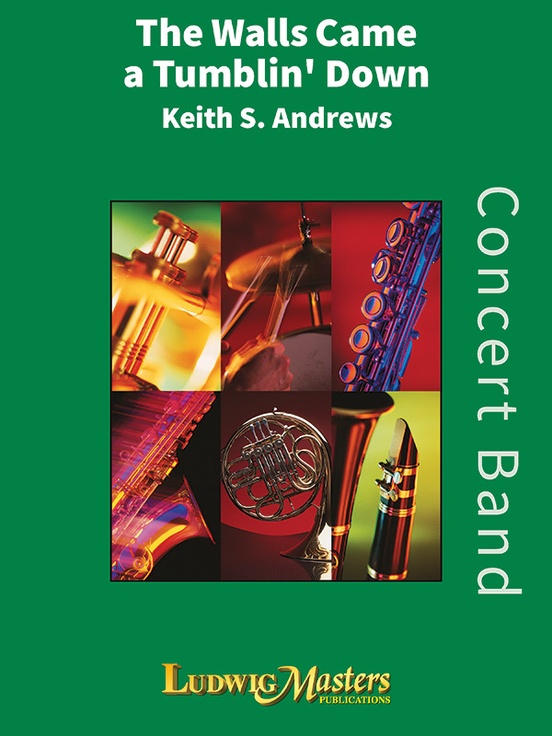Results
-
 £57.50
£57.50A Thousand Heroes - James Curnow
James Curnow's impressive compositional style resounds in this tribute to the heroic deeds of so many citizens of Sioux City, Iowa upon the tragic crash of United Airlines Flight 232 in 1989. This will be the landmark piece of theyear for your solid grade 3 band. A bold fanfare opening soon warms with the stately clarinets. Subtle reflection on the fanfare statement permeates the development of the piece, keeping the city's heroism and self-sacrifice inmind as the piece traverses its many moods. James Curnow's skillful orchestration allows the director endless opportunities to take the band's level of performance to higher levels.
Estimated dispatch 7-14 working days
-
 £55.00
£55.00Party in the U.S.A. (Concert Band - Score and Parts) - Roszell, Patrick
The ultimate Miley Cyrus party song! Party in the U.S.A. reached the #1 position on the Billboard Pop 100. So put your hands up and party! Duration: 1.45
Estimated dispatch 7-14 working days
-
 £84.95
£84.95A Staffordshire Festival Overture (Concert Band - Score and Parts) - Johnson, Stuart
When Johnson, Stuart was appointed music advisor for Staffordshire, England, it turned out that the the concert band were soon to perform in a huge festival for young musicians in The Royal Albert Hall, and so far an opening piece had not yet been chosen .... Johnson solved the problem brilliantlywith this technicall brilliant yet wonderfully sounding overture.
Estimated dispatch 7-14 working days
-
 £16.95
£16.95A Staffordshire Festival Overture (Concert Band - Score Only) - Johnson, Stuart
When Johnson, Stuart was appointed music advisor for Staffordshire, England, it turned out that the the concert band were soon to perform in a huge festival for young musicians in The Royal Albert Hall, and so far an opening piece had not yet been chosen .... Johnson solved the problem brilliantlywith this technicall brilliant yet wonderfully sounding overture.
Estimated dispatch 7-14 working days
-
 £45.95
£45.95The Walls Came A Tumblin' Down - Keith S. Andrews
Teaching swing is fun, and so much simpler when working with a tune everyone knows. This popular spiritual admirably fits the bill. The instrumentation is conservative, and with ample doublings it will be fun and easy to rehearse and perform.
Estimated dispatch 3-5 working days
-
 £42.50
£42.50So Proudly We Hail
Here is a march style arrangement that combines the patriotic classics My Country, 'Tis of Thee and America, The Beautiful. Eric Osterling's solid arrangement is easy to learn and will sound great with beginning bands.
Estimated dispatch 7-14 working days
-
 £89.99
£89.99You've Got A Friend - Carole King
The absolute top slow number of the Eighties sung by Roberta Flack. She is not perhaps so well known among younger people, but she has her place in history as one of the absolute divas of the world. Back into time, the interlude in your concerts.
Estimated dispatch 7-14 working days
-
 £109.99
£109.99A Portrait Of Nat King Cole - Nat King Cole
Some of the world hits of the jazz musician, singer, pianist and actor Nat King Cole have been arranged by Reiner Lghausen because they are so unforgettable. Who does not know Unforgettable , Fly me to the Moon , Mona Lisa , and Lazy, Dazy, Crazy? This arrangement was instrumented with the period in which it was originally performed in mind, with the typical compact wind section of the time for example.
Estimated dispatch 7-14 working days
-
 £42.50
£42.50So Proudly We Hail (Concert Band - Score and Parts) - Osterling, Eric
Here is a march style arrangement that combines the patriotic classics My Country, 'Tis of Thee and America, The Beautiful. Eric Osterling's solid arrangement is easy to learn and will sound great with beginning bands.
Estimated dispatch 7-14 working days
-
£108.10
IT AIN'T NECESSARILY SO (Intermediate Concert Band) - Gershwin, George - Naulais, Jerome
from Porgy and Bess - you can't beat a bit of Gershwin.Duration: 3:58 American Grade 3
Estimated dispatch 7-14 working days
